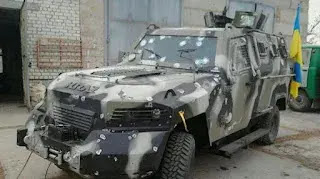The requirements
for transparent armor of lightweight combat armored vehicles of the ground
forces are determined by the NATO standard STANAG 4569. The standard provides
for several levels of protection. The transition from the first to the next
levels corresponds to an increase in the degree of protection of glass units.
According to the requirement of the standard, when moving from level 1 to level 3, an increase in the FSP impact velocity is observed from 550 to 770 m/s, which corresponds to a decrease in the distance of the projectile detonation from 100 to 60 m.
The 7.62 × 51 mm
NATO cartridge with the Bofors FFV (WC) armor-piercing bullet contains a
tungsten carbide core and is characterized by increased armor-piercing action.
The number of test hits (required) determines the vitality of the glass block
during the shelling.
Over the past
decade, a number of countries have carried out research and development work on
the working up of more efficient transparent armor, which, while maintaining
the achieved level of bulletproof resistance, is smaller in weight and
thickness, and is based on the principle of construction combined armor.
 |
| Sapphire-based Transparent Armor |
One of
the promising materials for transparent ceramics for armor is artificial
single-crystal sapphire. At the same time, the requirement for the
survivability of transparent armor of military vehicles of the ground forces is
supplemented by the term to withstand more powerful weapons, represented, first
of all, by a 20 mm FSP fragmentation simulator or a 7.62 mm FFV bullet with a
ceramic-metal core.
